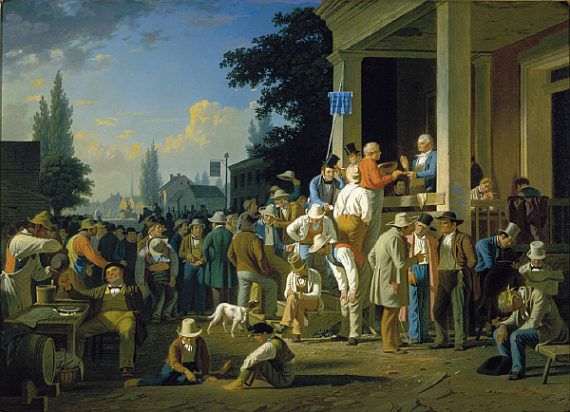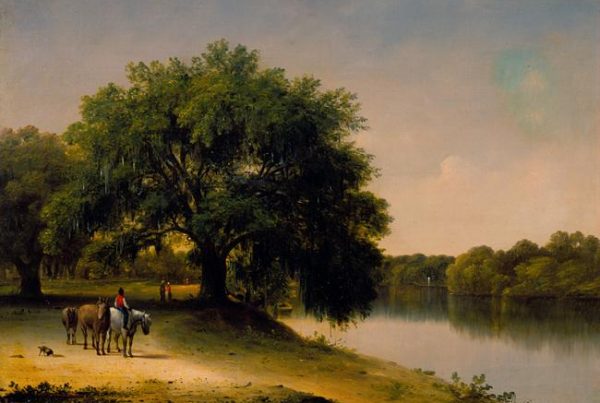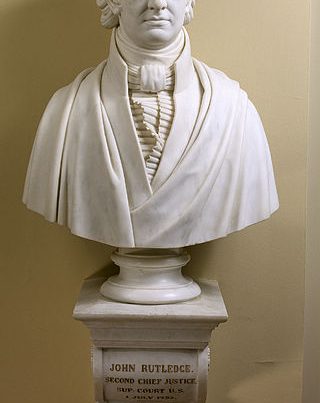The punitive “preclearance” regime under the Voting Rights Act (“VRA”) of 1965, imposed on seven “covered” southern states and a number of counties in two others, was essentially invalidated by the U.S. Supreme Court in Shelby County v. Holder in 2013. The lifting of this incubus freed the previously “covered” states and emboldened others to introduce legislation, notably a requirement of voter ID, to stop voter fraud and protect the integrity and reliability of the electoral process. Opposition to Shelby has been shrill. In July 2018 The Atlantic magazine ran an article by Vann R. Newkirk II headed: “How Shelby County v. Holder Broke America,” with the subheading: “In the five years since the landmark decision, the Supreme Court has set the stage for a new era of white hegemony.”
Unanswered questions
Shelby was decided on a very narrow basis, leaving some important unanswered questions, such as:
-
- Are voter ID laws caught by the overall framework of the VRA?
- If so, it must surely be for opponents of voter ID to show that its true purpose and effect is to suppress the voting rights of minorities and the poor. This has proved a stumbling block for opponents of voter ID and for the courts. The solution is to provide a wide variety of ID options.
- Can voter ID prevent or curtail voter fraud? It can certainly reduce in-person voter impersonation, which opponents of voter ID say does not really exist.
- And does voter fraud exist anyway? In-person voter impersonation is evidently rare, but there is a vast number of dead voters who are still registered and also voters who are registered in more than one state – an open invitation to fraud in the absence of voter ID.
- Above all, is the VRA in itself an unconstitutional violation of states’ rights under the Tenth Amendment of the U.S. Constitution? If not the whole of the VRA, then at least the now-empty “preclearance” framework in 5 must be a prime candidate for striking down as unconstitutional.
“Preclearance”
The VRA formed part of Lyndon Johnson’s onslaught against the South and against states’ rights. The purpose of the Act, signed into law by an enthusiastic President Johnson, was to enforce the voting rights guaranteed by the Fourteenth and Fifteenth Amendments to the U.S. Constitution, which had been forced on a defeated South in 1868 and 1870 respectively during “Reconstruction.” VRA §2 contains a general prohibition against any “voting qualifications or prerequisite to voting” applied by any State “to deny or abridge the right of any citizen of the United States to vote on account of race or color.” VRA §4(b) subjected to “preclearance” under VRA §5 a number of (mostly southern) states which the Attorney General determined had “maintained on November 1, 1964, any test or device” as a prerequisite to voting, and where less than 50% of eligible voters were registered or less than 50% of such voters actually voted in the 1964 presidential election.
A new form of Reconstruction?
The “preclearance” requirement prohibited the states or districts concerned from making any change to their voting regulations without receiving preapproval from the U.S. Attorney General or the U.S. District Court for the District of Columbia. “Preclearance” effectively subjected the “covered” states to a new form of Reconstruction, which was arguably unconstitutional by being in violation of the Tenth Amendment. By 2013 there were nine states “covered” by “preclearance,” seven of which were in the South: Alabama, Georgia, Louisiana, Mississippi, South Carolina, Texas and Virginia – plus a number of counties in Florida and North Carolina.
Shelby effectively struck down VRA §4(b), but it left §§2 and 5 standing. The basis of the ruling was very narrow: simply that the “preclearance coverage formula” of 1965 was no longer relevant. Here is how Chief Justice Roberts put it in his majority opinion: “Coverage today is based on decades-old data and eradicated practices. The formula captures States by reference to literacy tests and low voter registration in the 1960s and early 1970s. But such tests have been banned nationwide for over 40 years. And voter registration and turnout numbers in the covered States have risen dramatically in the years since. Racial disparity in those numbers was compelling evidence justifying the preclearance remedy and the coverage formula. There is no longer such a disparity…….Our decision in no way affects the permanent, nationwide ban on racial discrimination in voting found in §2. We issue no holding on §5 itself, only on the coverage formula. Congress may draft another formula based on current conditions.”
Tenth Amendment
There is not a word here about the possibility that the whole of the VRA, or even just §5, might be unconstitutional in terms of the Tenth Amendment. Justice Clarence Thomas alone addressed the constitutional issue, both in Shelby, and more particularly in Northwest Austin (Texas) v. Holder (2009): “In the specific area of voting rights, this Court has consistently recognized that the Constitution gives the States primary authority over the structuring of electoral systems.” And, quoting Justice Black in Oregon v. Mitchell (1970): “No function is more essential to the separate and independent existence of the States and their governments than the power to determine within the limits of the Constitution the qualifications of their own voters for state, county, and municipal offices…”
In the main, the “Framers of the Constitution intended the States to keep for themselves, as provided in the Tenth Amendment, the power to regulate elections.” (Gregory v. Ashcroft [1991]). A similar emphasis on states’ rights was placed by Justice Samuel Alito in his majority opinion in the Texas redistricting case Abbott, Governor of Texas v. Perez (2018): “The good faith of the state legislature must be presumed….The allocation of the burden of proof and the presumption of legislative good faith are not changed by a finding of past discrimination.” [For more on the constitutional aspects, see Dr Michael Arnheim, U.S. Constitution for Dummies, 2nd edition, 2018).
Challenges to Voter ID Laws
The lame majority holding in Shelby means that challenges to changes in electoral law in the (mainly southern) states previously covered by the preclearance system now have to be decided on a case-by-case basis. The current focus is on voter ID laws, with conservatives favoring photo ID to prevent fraud and liberals tending to oppose it as discriminatory of minorities and the poor.
Jimmy Carter & Justice John Paul Stevens
The opposition to voter ID has actually intensified in recent years. As long ago as 2005 a bipartisan report by a commission headed up by the liberal ex-President Jimmy Carter recommended that voter ID be made mandatory in all states and that eligible voters should be issued with free photo ID cards. In Crawford v. Marion County Election Board (2008), the question before the U.S. Supreme Court was: Does a law that requires photo ID for voting unduly burden a citizen’s right to vote? A 6-3 majority held that the slight burden that such a law imposed on voters did not outweigh a legitimate state interest to prevent voter fraud. The Indiana law in question required photo ID for voting but also allowed those unable to afford photo ID to vote if they executed a sworn affidavit. Interestingly enough, the majority opinion was written by Justice John Paul Stevens, who is generally thought of as a liberal. He concluded his opinion by rejecting the objection that the voter ID law was essentially partisan, being supported by Republicans and opposed by Democrats: “If a nondiscriminatory law is supported by valid neutral justifications, those justifications should not be disregarded simply because partisan interests may have provided one motivation for the votes of individual legislators,” and the statute in question “is amply justified by the valid interest in protecting ‘the integrity and reliability of the electoral process.’” (Anderson v. Celebrezze [1983]).
Public opinion is broadly supportive of voter ID. A 2012 Pew poll showed an overall majority of 77% in favor of photo ID, made up of 95% of Republicans, 83% of Independents, and 61% of Democrats.
The danger of election fraud was highlighted by President Trump’s claim that between 3 and 5 million votes cast in the 2016 presidential election were illegal. In May 2017 Trump issued an executive order creating a Presidential Advisory Commission on Election Integrity, which aroused fierce opposition and seven lawsuits. The Commission was disbanded in January 2018.
Opportunities for Election Fraud
Although there is little evidence of what is termed in-person voter impersonation – as, for example, voting in the name of a dead voter — there is clearly plenty of room for other forms of election fraud. A 2012 report by the Pew Charitable Trust based on research conducted by RTI International, a nonprofit, nonpartisan research institute found that (a) “Approximately 24 million – one of every eight – voter registrations in the US are no longer valid or are significantly inaccurate.” (b) “More than 1.8 million deceased individuals are listed as voters.” (c) “Approximately 2.75 million people have registration in more than one state.” Of course, these figures do not equate to fraudulent voting statistics but do reveal the wide scope of opportunities for voter fraud. The same report also highlighted the fact that at least 51 million citizens, or more than 24% of the eligible population, appeared “to be unregistered in the United States”.
Photo ID
At the time of this writing nine Southern states require photo ID for voting: Alabama, Arkansas, Florida, Georgia, Louisiana, Mississippi, Tennessee, Texas and Virginia. A driver’s license issued by the state in question is the chief form of acceptable ID, followed by a special identity card usually obtainable for a small fee from the state’s Department of Motor Vehicles or (in Texas) Department of Public Safety. The precise requirements vary from state to state, but in most cases it is possible for a non-complying prospective voter to cast a provisional ballot subject to later confirmation.
North Carolina
The narrowness of the Shelby holding has resulted in inconsistent court decisions on voter ID laws. In July 2016 the 4th US Circuit Court of Appeals held that provisions of a North Carolina voter ID law were an unconstitutional attempt to “target African –Americans with almost surgical precision.” In August of that year the U.S. Supreme Court deadlocked 4-4 on a request from North Carolina to allow its voting rights law to go back into effect., thus leaving the negative lower court decision undisturbed. In May 2017, despite the presence of conservative Justice Neil Gorsuch, the Supreme Court issued a one-sentence order refusing to reopen the question.
Texas
Texas has fared a bit better than North Carolina. In April 2018 a strict voter ID law was upheld by the 5th US Circuit Court of Appeals, after earlier versions of the law had been blocked twice before. The Texas Voter Registration Application form is extremely flexible. It first asks for your Texas Driver’s License number or Texas Personal ID number, or, failing that, the last 4 digits of your Social Security number. It even asks: “Are you interested in serving as an election worker?” The only potentially objectionable features are the threat {printed in bold) of imprisonment up to 180 days or a fine up to $2,000, or both, for providing false information. The box marked “Gender” only allows two choices, but potential offense caused to the transgender community is averted by making that question optional! The only other conceivable cause of offense is the restriction of names to “First Name, Middle Name (if any), Last name, and Former name,” without any space for the Spanish convention of “mother’s maiden name” (which comes last, but, confusingly, is not the family name). The new Texas law allows voters without one of the seven accepted forms of ID to sign an affidavit confirming their identity and swearing that a reasonable impediment kept them from obtaining legal ID. They must also provide an approved “supporting form of ID.” Acceptable documents include original bank statements, paychecks, and even utility bills.
Conclusion
There is clearly a greater need than ever for voter ID in the South. But how to protect it against challenge? Texas has shown the way by allowing as many alternative forms of voter ID as possible and charging a minimal amount (currently $16.00) for a Personal ID Card from their Department of Public Safety.







